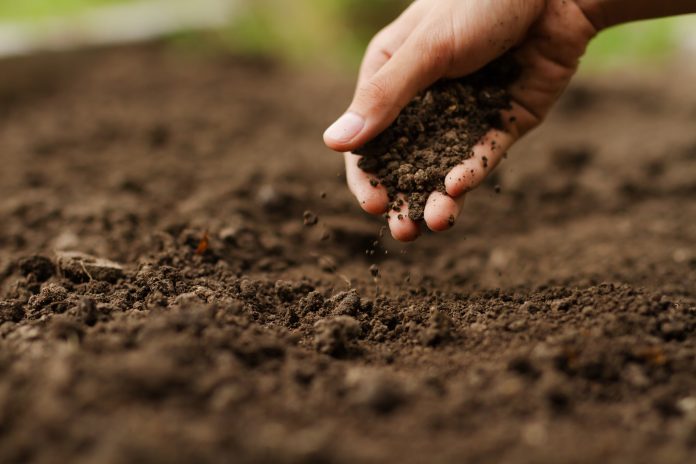Aarthi JanakiRaman, Research Manager, Chemicals and Advanced Materials at TechVision, Frost & Sullivan, states that soil health management is no longer restricted to agricultural activities
Soil is considered a viable living ecosystem in itself as it performs numerous functionalities that not only serve as a foundation of agricultural activities but also act as a key focal point for the growth and developmental activities of a nation. Its ability to function as a filter for environmental pollutants, maintains the groundwater balance whilst being a key medium for development and ecosystem diversification is critical. Therefore, the health and quality of soil must always be maintained optimally to ensure long-term benefits for society.
Soil, as a growth medium, has both inherent and dynamic properties. While the inherent properties focus on its natural ability to function, dynamic properties can evolve depending on how the soil is managed and nurtured. Hence, it’s important to understand, assess and establish proper soil management and health monitoring practices to ensure a long-term viable ecosystem. While the response of the soil to management practices is interlinked with its inherent properties or qualities and the surrounding areas, careful and continuous monitoring can help if the management practices need modification or are sustainable in the long-term.
Irrespective of the types of management practices and solutions used, the principles of soil health management remain constant; this includes promoting biodiversity, minimising disturbance, maintaining soil parameters as constant as possible (taking into account physical, chemical and biological properties) to name a few.
Soil health to reduce climate change impact
Ensuring soil health also helps in mitigating the effects of climate change; healthy soil, not restricted only to agricultural areas, and assists in carbon regulation, regulates temperature changes, improves water quality and availability, especially during dry seasons, and potentially reduces the negative effects of floods and droughts. It also encourages the growth of beneficial microorganisms and maintains optimum nutrient balance, ensuring expected yield and productivity, contributing directly to the food safety and security of a nation. Therefore, a proper and integrated environmental management approach will require a definite focus on soil health to ensure resilience towards climate change and also potentially decrease the aftermath of natural disasters.
Technologies to maintain soil health
With farming practices and the agriculture industry becoming more streamlined, automated and digitised, deploying technologies to monitor, improve and maintain soil health sustainably to be effective in the long-term are also on the rise. While the effective use of technology for agricultural inputs is comparatively well established, its adoption for monitoring soil health parameters not directly related to agricultural practices is still in nascent stages of deployment. While proper infrastructure is needed to ensure that technology deployment is smooth and benefits are fully realised, stakeholders are also investigating the possible deployment of integrated technology programmes that can help in overall soil health management, not restricted to agricultural activities. Technologies such as Infrared (IR) Spectroscopy are not only being considered for analysing soil for fertility parameters, organic matter, pH and heavy metals for agricultural activities, but also for promoting climate stability.
Technologies such as remote sensing, GIS (geographical information systems), GNSS, Big Data Analytics, Machine Learning and Cloud computing are used for digital mapping of the soil ecosystem to devise integrated health management programmes and protocols. AI and IoT enabled modelling programmes with prescriptive analytics can be used to interpret field data and devise models for integrated, easily customisable and continued soil health assessment.
The information gathered from various sources can be used for framing standards and protocols to maintain and promote soil health with the ultimate aim to ensure a food-water-energy nexus under the banner of sustainable development. The benefits of using digital technologies for soil health management are not only restricted to agricultural activities; its use for determining soil quality can be extrapolated to livestock disease monitoring and even human health, as one of the key indicators of animal and human health disease monitoring is the nutrient intake in the food chain of a specific region and environmental conservation.
Technology deployment is also in full swing with academia, research institutes and industry stakeholders for the same. For example, start-up companies like MicroGen Biotech in Ireland, Land Life Company in The Netherlands and Trace Genomics in the U.S. are exploring a combination of digital technologies with microbiome/genomic platforms for evaluating and initiating soil health programmes.
With the adoption of digital technologies in full swing, it’s necessary to maintain a careful balance of conventional field surveys and photogrammetry with new and advanced solutions. This requires a multidisciplinary approach and helps to provide real-time, comprehensive data for developing holistic soil health management solutions.
The final word
Despite realising the need for a well-rounded approach towards soil health, its impact is still measured on its ability to optimise productivity and yield per unit area of cultivable land with minimal inputs, energy and labour. The added benefits of soil health in ensuring the environmental footprint, promoting biodiversity, mitigating climate change remain in the early stages of consideration. Without proper consolidated interventional efforts from governments, industry and other stakeholders, the full benefits of sustained soil health that are not restricted to agricultural activities but also for mitigating climate change can’t be fully realised.
References
- Obade, V.d., Gaya, C. Digital technology dilemma: on unlocking the soil quality index conundrum. Bioresour. Bioprocess. 8, 6 (2021). https://doi.org/10.1186/s40643-020-00359-x
- Jialin Hu, Virginia L. Jin, Julie Y. M. Konkel, Sean M. Schaeffer, Liesel G. Schneider, Jennifer M. DeBruyn, Soil Health Management Enhances Microbial Nitrogen Cycling Capacity and Activity, mSphere Jan 2021, 6 (1) e01237-20; DOI: 10.1128/mSphere.01237-20.
- https://www.pewtrusts.org/en/research-and-analysis/blogs/stateline/2019/08/23/soil-health-can-combat-climate-change-from-the-ground-up (Accessed February 13, 2021)
- https://www.nrcs.usda.gov/wps/portal/nrcs/detail/soils/health/assessment/?cid=stelprdb1237387 (Accessed February 13, 2021).











